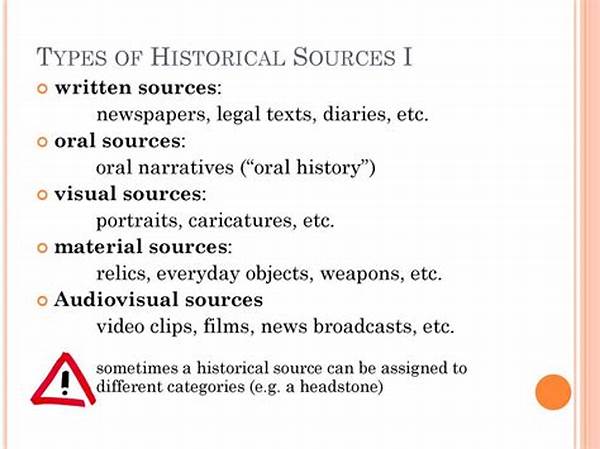In the bustling bazaar of the digital age, where information is bartered with the swift click of a mouse, historical research is experiencing a renaissance driven by the dynamic duo – audiovisual sources. Uniquely positioned as a nexus of sensory richness and technological finesse, these sources offer historians a vibrant palette to revisit and reconstruct the past. But why now? Why, in the midst of this digital revolution, have audiovisual sources claimed such a throne of importance?
Read More : Audio Visual Media Bringing Cultural Heritage Alive In Classrooms
Like a detective piecing together a complex mystery, historians today sift through an unprecedented variety of visual and auditory artifacts. Gone are the days when crumbling parchment and dusty tomes were the only keys to unlocking history’s secrets. Today, audiovisual sources are not just supplementary; they are essential, offering insights and perspectives that written records alone cannot match. They serve as candid snapshots of moments as they truly were, artfully capturing the nuances of their times in brilliant, and sometimes candid, detail.
The Rise of Audiovisual Sources
Audiovisual sources are rapidly becoming the crown jewels of historical research. Why, you ask? It’s simple: they engage more of our senses. While text undoubtedly has a place in our hearts – and history books – the richness of a video clip, the emotion in a voice recording, or the vibrancy of a historic broadcast all combine to breathe life into historical narratives. It’s like going from monochrome to technicolor; the past becomes vivid, more relatable, and strikingly real.
They say a picture is worth a thousand words, and in history, this rings especially true. Visual sources allow us to witness historical events with our own eyes, breaking temporal barriers and fostering a more personal connection. Watching a grainy newsreel from World War II or listening to a crackling radio broadcast of the moon landing delivers an emotional punch and a layer of understanding that mere description could never provide.
Capturing Unseen Narratives
The true charm of audiovisual sources lies in their ability to capture unseen and often unheard narratives. These sources amplify marginalized voices, portraying perspectives that traditional texts might overlook or undervalue. A video diary from the trenches of war, an interview with a civil rights activist, or even an amateur home video of a family’s migration journey can reveal intricacies and emotions lost in traditional records.
The digital age has democratized history, allowing anyone with a smartphone and internet access to become a documentarian, thereby enriching the historical canon with a plethora of perspectives. This incorporation of diverse narratives challenges us to think critically and allows for a more nuanced understanding of history, making our interpretation more inclusive and accurate.
Enhancing Historical Understanding
Audiovisual sources offer distinct advantages in enhancing the depth and breadth of historical understanding. They allow researchers to overlay sound and imagery, linking the static with the dynamic and offering a more comprehensive view of the past. This layering of senses can transform dry facts into living, breathing stories.
Consider the case of oral histories, where the tone, pace, and pitch of a speaker convey context that the text cannot. Audiovisual sources grant historians access to this rich tapestry, enabling them to grasp underlying meanings and sentiments. Similarly, video footage of critical events provides context that highlights cultural and social dynamics, encouraging a more engaging exploration of history.
Bridging the Gap Between Past and Present
In today’s tech-savvy world, audiovisual sources act as bridges between the past and present, connecting a digital generation with historical realities that might otherwise seem outdated or irrelevant. Digital platforms such as YouTube and various archives provide accessible avenues for engaging with history, allowing for immersive experiences that educate and entertain.
Read More : Audio And Video Synchronization Tutorial In Premiere Pro
Think of a blog post that cleverly combines historical video clips with narrative storytelling — it’s fun, it’s engaging, and it’s informative. By threading images and sounds in narratives, researchers create a story that hooks audiences, igniting curiosity and sparking dialogue about our shared past. This strategy not only broadens participation in historical discourse but also ensures a more informed public.
Practical Applications and Examples
To truly grasp the impact of audiovisual sources, one must consider their practical applications in historical research. From mainstream media’s archival footage to personal testimonies captured on film, these resources offer a treasure trove for researchers eager to delve deeper into history.
Shaping Historical Perspectives
The benefits of audiovisual sources in historical research during the digital age cannot be understated. They invite us to engage with history on a sensory level, fostering deeper awareness and connection. By capturing diverse perspectives, they challenge established narratives and invite us to consider history’s multifaceted nature.
This shift isn’t merely an academic phenomenon; it’s a cultural transformation. Imagine a world where students learn history not just from textbooks but through interactive, multimedia experiences that make the past come alive. Such methods encourage critical thinking, ensuring that future generations understand not just what happened, but why it matters.
Conclusion
In sum, the benefits of audiovisual sources in historical research during the digital age are profound. They enrich our understanding by offering dynamic, multisensory experiences that capture the essence of historical moments. This modern approach to history encourages more inclusive, comprehensive, and engaging narratives, making the past accessible to a broader audience.
As we continue to navigate this digital era, the onus is on us as historians, educators, and enthusiasts to embrace these resources and recognize their potential in shaping the way we view and interpret the past. Let’s dive into history with our eyes and ears wide open, ready to uncover the stories that await beyond the written word.
